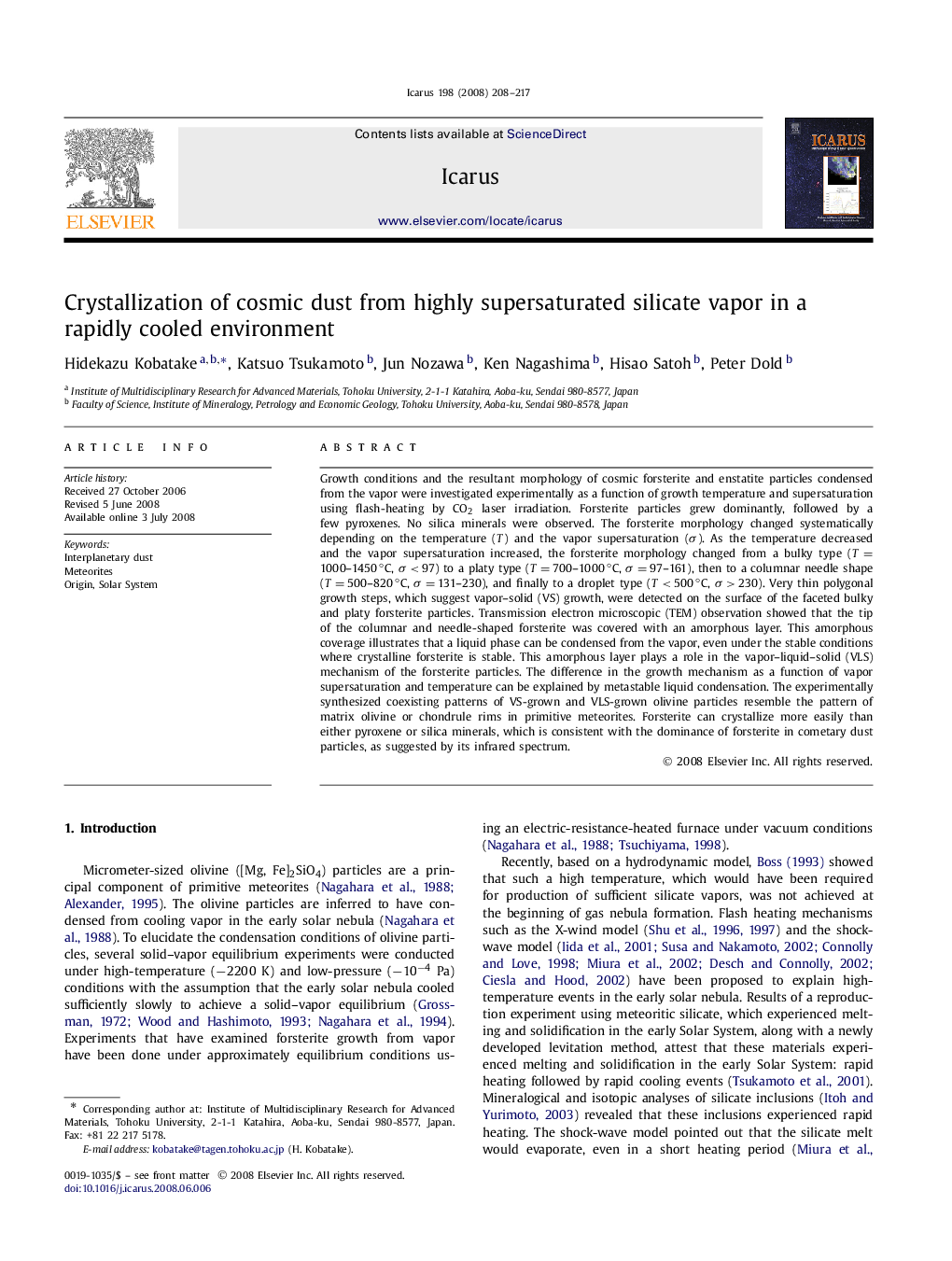| کد مقاله | کد نشریه | سال انتشار | مقاله انگلیسی | نسخه تمام متن |
|---|---|---|---|---|
| 1774794 | 1021174 | 2008 | 10 صفحه PDF | دانلود رایگان |

Growth conditions and the resultant morphology of cosmic forsterite and enstatite particles condensed from the vapor were investigated experimentally as a function of growth temperature and supersaturation using flash-heating by CO2 laser irradiation. Forsterite particles grew dominantly, followed by a few pyroxenes. No silica minerals were observed. The forsterite morphology changed systematically depending on the temperature (T) and the vapor supersaturation (σ ). As the temperature decreased and the vapor supersaturation increased, the forsterite morphology changed from a bulky type (T=1000–1450 °CT=1000–1450 °C, σ<97σ<97) to a platy type (T=700–1000 °CT=700–1000 °C, σ=97–161σ=97–161), then to a columnar needle shape (T=500–820 °CT=500–820 °C, σ=131–230σ=131–230), and finally to a droplet type (T<500 °CT<500 °C, σ>230σ>230). Very thin polygonal growth steps, which suggest vapor–solid (VS) growth, were detected on the surface of the faceted bulky and platy forsterite particles. Transmission electron microscopic (TEM) observation showed that the tip of the columnar and needle-shaped forsterite was covered with an amorphous layer. This amorphous coverage illustrates that a liquid phase can be condensed from the vapor, even under the stable conditions where crystalline forsterite is stable. This amorphous layer plays a role in the vapor–liquid–solid (VLS) mechanism of the forsterite particles. The difference in the growth mechanism as a function of vapor supersaturation and temperature can be explained by metastable liquid condensation. The experimentally synthesized coexisting patterns of VS-grown and VLS-grown olivine particles resemble the pattern of matrix olivine or chondrule rims in primitive meteorites. Forsterite can crystallize more easily than either pyroxene or silica minerals, which is consistent with the dominance of forsterite in cometary dust particles, as suggested by its infrared spectrum.
Journal: Icarus - Volume 198, Issue 1, November 2008, Pages 208–217